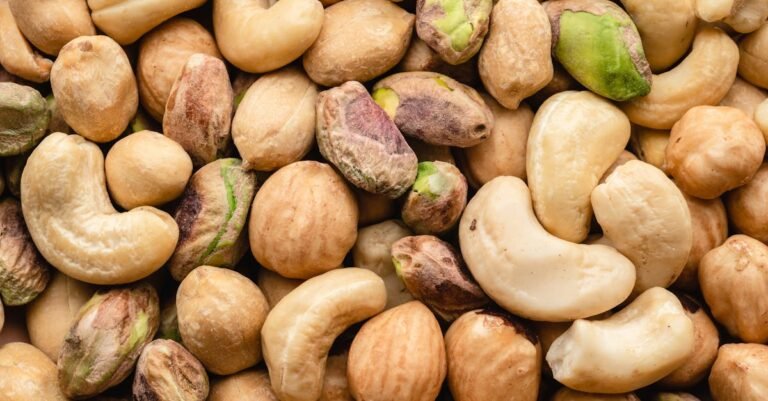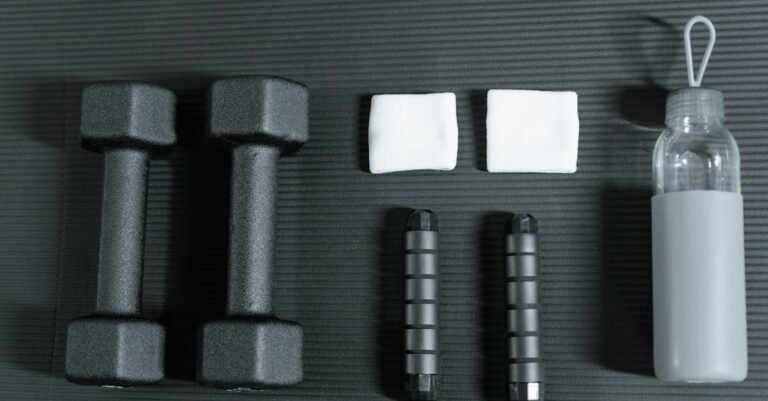Table of Contents
- Introduction: Debunking the “Fat is Bad” Myth
- What Exactly Are Healthy Fats?
- Why Your Body Craves Healthy Fats
- Identifying and Avoiding Unhealthy Fats
- Delicious Ways to Get Your Healthy Fat Fix
- How Much Healthy Fat Do You Really Need?
- Conclusion: Embracing Fats for a Healthier You
- Frequently Asked Questions
Healthy Fats: Why Your Body Needs Them
Introduction: Debunking the “Fat is Bad” Myth
Let’s talk about fat. For decades, this three letter word has been public enemy number one in the world of nutrition. We’ve been told to banish it, fear it, and opt for “fat free” everything. But what if I told you that fat, specifically the right kind of fat, isn’t just okay, it’s absolutely essential for your health? It sounds a bit rebellious after years of low fat dogma, doesn’t it? But stick with me, because understanding healthy fats is a game changer for your well being.
A Brief History of Fat Phobia
So, how did fat get such a bad rap? Rewind a few decades, and you’ll find early research linking dietary fat, particularly saturated fat, to heart disease. This sparked a massive public health campaign promoting low fat diets. Food manufacturers jumped on board, flooding grocery store shelves with low fat and fat free products. The problem? To make these products palatable, they often loaded them up with sugar, refined carbohydrates, and artificial ingredients. Ironically, this shift didn’t make us healthier; in many ways, it contributed to rising rates of obesity, type 2 diabetes, and other chronic diseases. We essentially swapped one perceived villain for another, arguably worse, one.
Setting the Record Straight: Not All Fats Are Created Equal
Here’s the crucial takeaway: fat isn’t a single entity. It’s a diverse group of molecules, and lumping them all together is like saying all cars are the same. A beat up old clunker is vastly different from a sleek, efficient electric vehicle, right? Similarly, the fats found in a greasy fast food burger are worlds apart from the fats in avocados or salmon. The key is distinguishing between the “good guys” (unsaturated fats) and the “bad guys” (primarily artificial trans fats, and excessive amounts of certain saturated fats).
What Exactly Are Healthy Fats?
Okay, let’s get down to the nitty gritty. When we talk about “healthy fats,” we’re primarily referring to unsaturated fats. Think of these as the flexible, beneficial fats that your body loves. They typically remain liquid at room temperature (like olive oil) and play vital roles in keeping you healthy.
Unsaturated Fats: The Good Guys
Unsaturated fats are the heroes of the fat world. They come in two main varieties: monounsaturated and polyunsaturated. Both offer significant health benefits, particularly for your heart.
Monounsaturated Fats (MUFAs)
Found abundantly in foods like olive oil, avocados, nuts (like almonds, cashews, pecans), and seeds (like pumpkin and sesame seeds), MUFAs are fantastic for your heart. They can help lower levels of “bad” LDL cholesterol while potentially increasing levels of “good” HDL cholesterol. Think of LDL as the delivery truck dropping off cholesterol packages in your arteries, potentially causing blockages, while HDL is the cleanup crew, taking excess cholesterol away. MUFAs help keep this system running smoothly.
Polyunsaturated Fats (PUFAs)
PUFAs are also essential fats, meaning your body can’t make them; you have to get them from your diet. They include two crucial types: omega 3 and omega 6 fatty acids. Found in sources like fatty fish, walnuts, flaxseeds, chia seeds, and sunflower oil, PUFAs are involved in numerous bodily functions, from brain health to inflammation control.
Omega 3 Fatty Acids: The Superstars
You’ve probably heard a lot about omega 3s, and for good reason! These are the true superstars of the PUFA family. There are three main types: ALA (alpha linolenic acid), found in plant sources like flaxseeds and walnuts, and EPA (eicosapentaenoic acid) and DHA (docosahexaenoic acid), found primarily in fatty fish like salmon, mackerel, herring, and sardines. EPA and DHA are particularly potent, offering incredible benefits for heart health (lowering triglycerides, reducing blood pressure), brain function (DHA is a major structural component of the brain), reducing inflammation, and supporting eye health. They’re like the multi talented athletes of the nutrient world.
Omega 6 Fatty Acids: The Balance Beam
Omega 6 fatty acids, found in vegetable oils (like corn, soybean, sunflower oil), nuts, and seeds, are also essential. They play roles in skin health, bone health, and regulating metabolism. However, the key with omega 6s is balance. Most Western diets contain far too many omega 6s relative to omega 3s. This imbalance can potentially promote inflammation. It’s not that omega 6s are inherently bad, but we need a healthier ratio, ideally closer to 4:1 or even lower (omega 6 to omega 3), compared to the typical 15:1 or higher seen in many diets. It’s like a seesaw; you need weight on both sides, but too much on one side throws everything off kilter.
Why Your Body Craves Healthy Fats
So, why all the fuss? Why does your body desperately need these healthy fats? The reasons are numerous and fundamental to your very existence.
Fueling Your Engine: Energy Production
While carbohydrates are often touted as the primary energy source, fat is actually a more concentrated and efficient fuel. Each gram of fat provides 9 calories, compared to 4 calories per gram for carbohydrates and protein. Your body stores fat as energy reserves, tapping into it during prolonged activity or when carbohydrate stores are low. Think of carbs as quick burning kindling and fat as the slow burning logs that keep the fire going for longer.
Brain Power Boost: Cognitive Function and Mood
Did you know your brain is nearly 60% fat? Seriously! Healthy fats, particularly DHA (an omega 3), are critical structural components of brain cell membranes. They are essential for nerve transmission, memory, learning, and overall cognitive function. Adequate intake of healthy fats, especially omega 3s, has been linked to improved mood, reduced risk of depression, and potentially protecting against age related cognitive decline. Feeding your brain healthy fats is like giving it the high quality building materials it needs to function optimally.
Nutrient Absorption: Unlocking Vitamins
Some essential vitamins – namely vitamins A, D, E, and K – are “fat soluble.” This means your body needs dietary fat to absorb and utilize them effectively. Without enough fat in your diet, you could be eating plenty of these vitamins but not actually reaping their benefits. Adding a drizzle of olive oil to your salad or enjoying some avocado with your meal isn’t just tasty; it helps unlock the nutritional power of the other foods you’re eating. It’s like needing the right key (fat) to open the treasure chest (vitamins).
Building Blocks: Cell Structure and Hormones
Every single cell in your body has a membrane surrounding it, and guess what? These membranes are largely composed of fats (lipids). Healthy fats ensure these membranes are fluid and function correctly, allowing nutrients in and waste out. Fats are also precursors for producing vital hormones, including steroid hormones like estrogen and testosterone, which regulate countless bodily processes, from metabolism to reproduction to stress response. Without adequate fat, these fundamental processes can falter.
Heart Health Heroes: Protecting Your Ticker
This is a big one! As mentioned earlier, unsaturated fats (MUFAs and PUFAs) are champions for cardiovascular health. They help lower bad LDL cholesterol, raise good HDL cholesterol, reduce triglycerides (fats in the blood), lower blood pressure, and prevent the buildup of fatty plaques in the arteries (atherosclerosis). Omega 3s, in particular, can also help prevent blood clots and reduce inflammation, both major contributors to heart disease. Including healthy fats is one of the best dietary strategies for keeping your heart happy and healthy.
Skin Deep: Radiant Skin and Healthy Hair
Want glowing skin and lustrous hair? Healthy fats play a role here too! They help maintain the skin’s natural oil barrier, keeping it hydrated, plump, and protected from damage. Essential fatty acids can help manage inflammatory skin conditions like eczema and acne. Think of fats as internal moisturizers, working from the inside out to give you that healthy radiance.
Identifying and Avoiding Unhealthy Fats
Now that we’ve sung the praises of healthy fats, let’s briefly touch on the types you should limit or avoid.
Saturated Fats: Handle with Care
Saturated fats are typically solid at room temperature and are found primarily in animal products (red meat, butter, cheese, full fat dairy) and some tropical oils (coconut oil, palm oil). Historically, these were the fats demonized for raising LDL cholesterol and increasing heart disease risk. The picture is a bit more complex now, with research suggesting that the source of saturated fat matters, and moderate intake, especially from less processed sources, might not be as harmful as once thought for everyone. However, it’s still generally recommended to limit intake and prioritize unsaturated fats. Think of them as fats to consume in moderation, not necessarily to eliminate entirely, but definitely not the stars of the show.
Trans Fats: The Real Villains to Avoid
These are the fats you absolutely want to avoid as much as possible. Artificial trans fats (also known as partially hydrogenated oils) are created through an industrial process that adds hydrogen to liquid vegetable oils to make them more solid and shelf stable. They raise bad LDL cholesterol, lower good HDL cholesterol, increase inflammation, and significantly increase the risk of heart disease, stroke, and type 2 diabetes. Thankfully, many countries have banned or strictly limited their use, but they can still lurk in some processed foods like commercially baked goods, fried foods, shortening, and some margarines. Always check labels for “partially hydrogenated oil” and steer clear!
Delicious Ways to Get Your Healthy Fat Fix
Eating healthy fats doesn’t mean choking down bland supplements. It’s about incorporating delicious, whole foods into your diet!
Fabulous Food Sources
Here’s a quick list to get you started:
- Avocados: Creamy, versatile, and packed with MUFAs. Add them to salads, toast, smoothies, or just eat them with a spoon!
- Nuts: Almonds, walnuts, pecans, macadamia nuts, cashews. Great for snacking, adding to yogurt or oatmeal, or making nut butters. Walnuts are particularly rich in omega 3s (ALA).
- Seeds: Chia seeds, flaxseeds, hemp seeds, pumpkin seeds, sunflower seeds. Sprinkle them on everything! Flax and chia are omega 3 powerhouses (ALA).
- Fatty Fish: Salmon, mackerel, herring, sardines, anchovies. Aim for at least two servings per week for a good dose of EPA and DHA.
- Olive Oil: Especially extra virgin olive oil. Use it for salad dressings, drizzling over cooked veggies, or low to medium heat cooking.
- Olives: A great source of MUFAs.
- Eggs: The yolk contains healthy fats and important nutrients.
- Dark Chocolate (in moderation): Choose varieties with high cacao content (70% or more) for some healthy fats and antioxidants.
Simple Swaps for a Healthier Diet
Boosting your healthy fat intake can be easy:
- Swap creamy, mayo based salad dressings for an olive oil and vinegar vinaigrette.
- Choose avocado toast instead of buttered toast.
- Snack on a handful of nuts instead of chips or crackers.
- Add chia seeds or ground flaxseeds to your morning smoothie or oatmeal.
- Replace some red meat meals with fatty fish.
- Use olive oil for cooking instead of butter or margarine (where appropriate for heat).
How Much Healthy Fat Do You Really Need?
There’s no single magic number, as individual needs vary based on age, activity level, overall health, and caloric needs. However, general dietary guidelines often suggest that total fat intake should make up about 20% to 35% of your total daily calories. The crucial part is focusing on the type of fat. Prioritize unsaturated fats (MUFAs and PUFAs), keep saturated fat intake moderate (often recommended below 10% of daily calories), and minimize trans fats as much as possible.
Instead of meticulously counting grams, a simpler approach is to focus on incorporating whole food sources of healthy fats into your meals and snacks regularly. Listen to your body and focus on a balanced, varied diet rich in plants, lean proteins, and, of course, those wonderful healthy fats!
Conclusion: Embracing Fats for a Healthier You
So, there you have it. Fat isn’t the enemy we once thought it was. In fact, healthy fats – the monounsaturated and polyunsaturated kinds found in delicious foods like avocados, nuts, seeds, and fatty fish – are absolutely essential for energy, brain health, nutrient absorption, hormone production, heart protection, and so much more. It’s time to ditch the fat phobia and embrace the power of these incredible nutrients. By making informed choices, prioritizing unsaturated fats, and limiting the unhealthy kinds, you can harness the benefits of dietary fat to fuel a healthier, more vibrant life. Don’t fear fat; fuel yourself wisely!
Frequently Asked Questions
1. Won’t eating fat make me fat?
This is a common misconception! While fat is calorie dense (9 calories per gram), eating healthy fats in moderation as part of a balanced diet is unlikely to cause weight gain. In fact, healthy fats can increase feelings of fullness and satisfaction, potentially helping with weight management by reducing overall calorie intake. Weight gain is more often linked to consuming excess calories overall, particularly from processed foods high in sugar, refined carbs, and unhealthy fats, rather than from healthy fats themselves.
2. Is coconut oil a healthy fat?
Coconut oil is interesting because it’s high in saturated fat, but the type of saturated fat (medium chain triglycerides or MCTs) behaves differently in the body than the longer chain saturated fats found in animal products. Some studies suggest potential benefits, like boosting HDL (“good”) cholesterol, but it also raises LDL (“bad”) cholesterol. Current advice is generally to use coconut oil in moderation and still prioritize unsaturated fats like olive oil as your primary cooking and finishing oils.
3. Can I get enough Omega 3s if I’m vegetarian or vegan?
Yes, but it requires more planning. Plant based sources like flaxseeds, chia seeds, hemp seeds, and walnuts provide ALA omega 3s. However, the conversion of ALA to the more potent EPA and DHA in the body can be inefficient for some people. Vegans and vegetarians might consider incorporating ALA rich foods daily and potentially look into algae based EPA/DHA supplements, which are derived directly from marine algae (the original source for fish).
4. What’s the best oil to cook with for healthy fats?
It depends on the cooking temperature. For dressings, drizzling, and low heat cooking, extra virgin olive oil is excellent due to its MUFA content and antioxidants. For higher heat cooking (like sautéing or roasting), oils with higher smoke points are better. Avocado oil (high in MUFAs) and light/refined olive oil have higher smoke points than extra virgin olive oil. While some vegetable oils like sunflower or corn oil are high in PUFAs (omega 6), it’s generally better to prioritize oils richer in MUFAs or omega 3s due to the typical imbalance in Western diets.
5. If I take a fish oil supplement, do I still need to eat fatty fish?
Supplements can help bridge the gap, especially if you don’t eat fish regularly. However, whole foods often provide a synergistic blend of nutrients that supplements can’t replicate. Fatty fish offers not only EPA and DHA but also high quality protein, vitamin D, selenium, and other beneficial compounds. If possible, getting nutrients from whole food sources like fatty fish is generally preferred, but a high quality fish or algae oil supplement is a good alternative or addition if needed.










